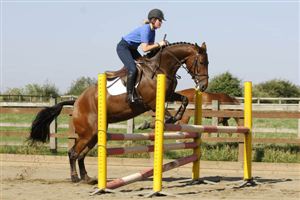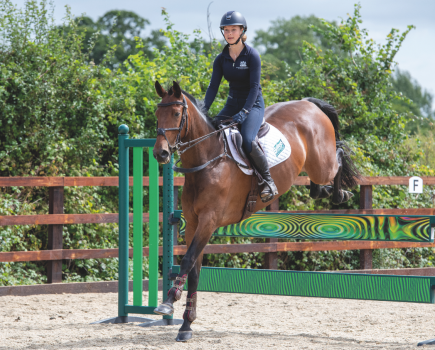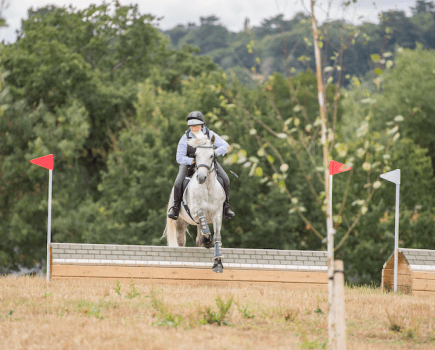International show jumper and trainer Paul Crago believes in a carefully tailored combination of schooling and jump training to improve a horse’s jump as far as possible on top of his own natural ability.
“Horse’s aren’t designed to jump so if your horse isn’t naturally a good jumper you won’t make him perfect, but there is a great deal you can do to improve his ability to jump,” he says.
Paul goes on to explain the very first step for any horse and rider hoping to succeed in jumping – schooling on the flat.
“A good jumper must be able to engage his hocks and jump with power from behind, plus it’s all about control and quality canter so flatwork exercises that involve transitions and lateral work are really important.
“For a young horse simple lateral movements including; leg-yield, shoulder-in, quarters-in and half-pass are all hugely beneficial. For a more experienced horse additional movements such as turn on the forehand are also great for building strength,” explains Paul.
Gymnastics for jumping
Paul believes that using grid work is great way to keep you and your horse thinking and for teaching your horse stay careful.
“What exact combination of jumping exercises you use in your training will depend on your horse but generally grid work is good for horses whether they’re old or young, experienced or not.
“Trotting poles up to a simple grid of cross-poles is a great place to start and from there on out there are thousands of grid variations to try. Just ensure you’ve always got someone who knows what they’re doing on the ground to help and guide you.”
Try this…
Step 1
Begin with basic trotting poles to work on rhythm and balance.
Step 2
Add some simple bounces over cross-poles after your trotting poles.
Step 3
Next, build up your grid by adding two strides to an oxer then one stride to an upright (keep the fences relatively low and simple). These additional elements will help to sharpen your horse up in front and build his strength behind. This exercise can be ridden in both directions but it is more difficult going backwards so only attempt that route on a more advanced horse.
Step 4
To up the difficulty you can make your trotting poles into low uprights.
Step 5
The next step is to add one stride then an oxer to the end of your grid. To further increase the difficulty, gradually widen the rails of your oxer to increase your horse’s stretch and arc over the fence. Take care not to do this too early in your horse’s training and don’t make the oxer too high- if you do and you’re horse isn’t ready for it you’ll risk knocking his confidence.









